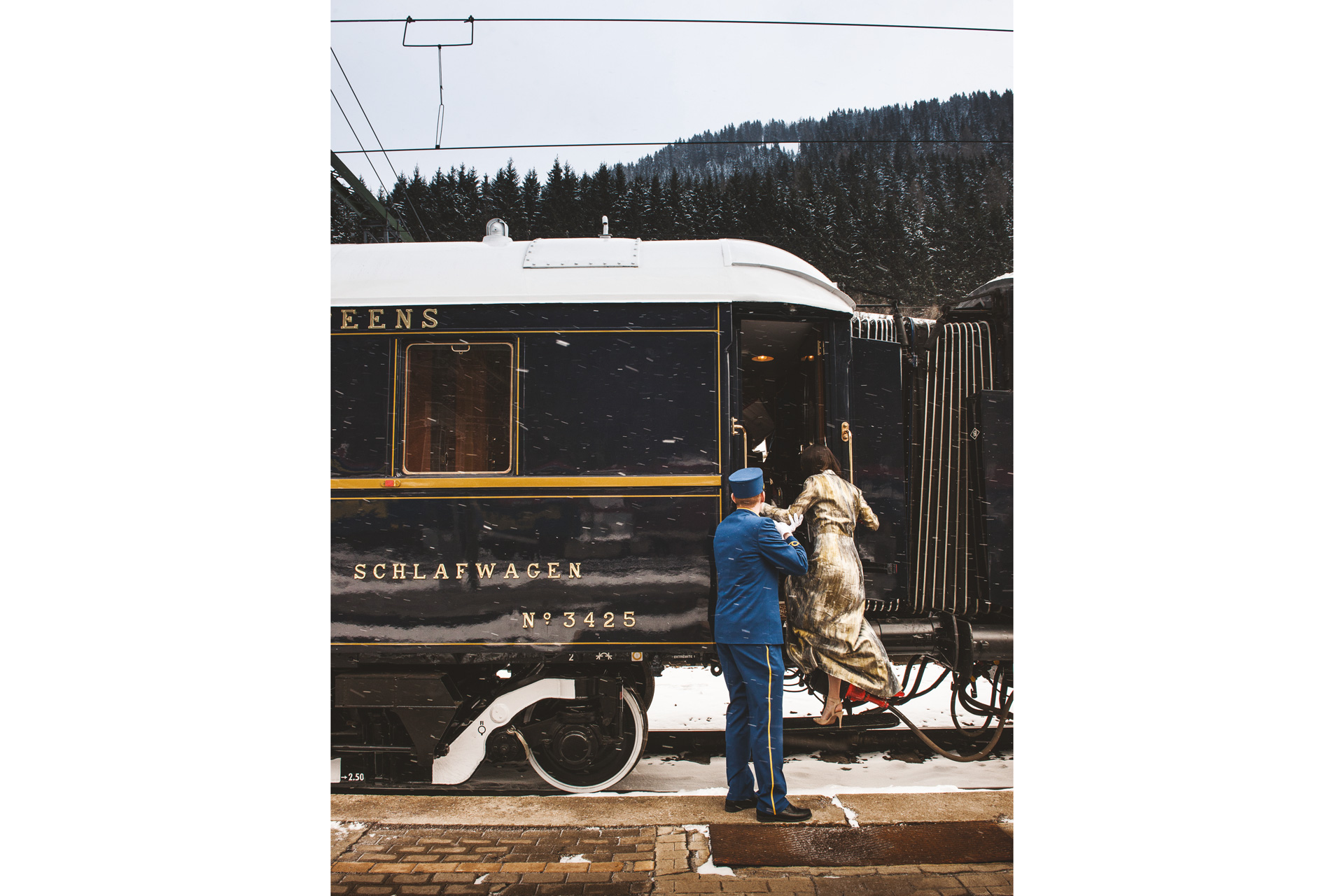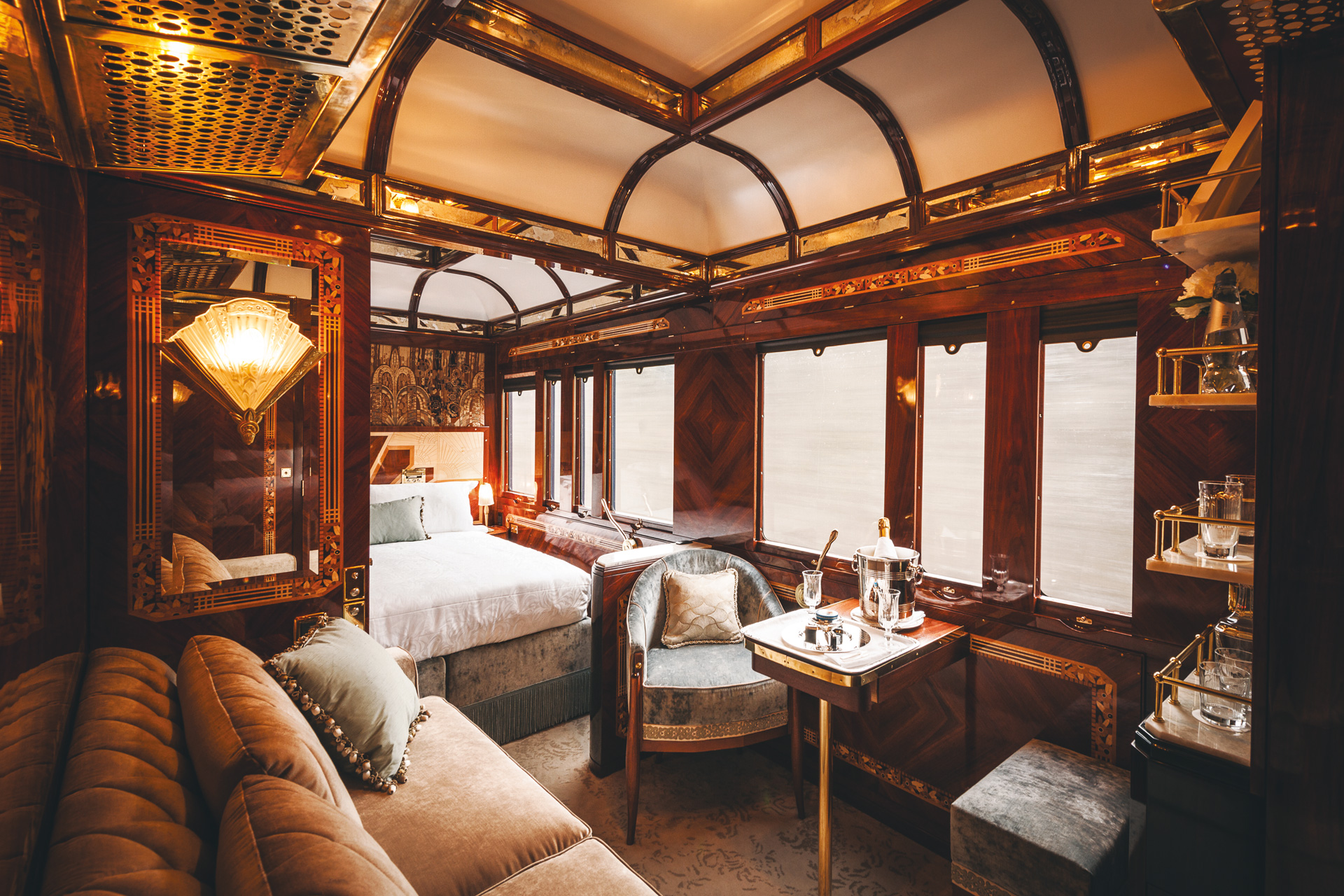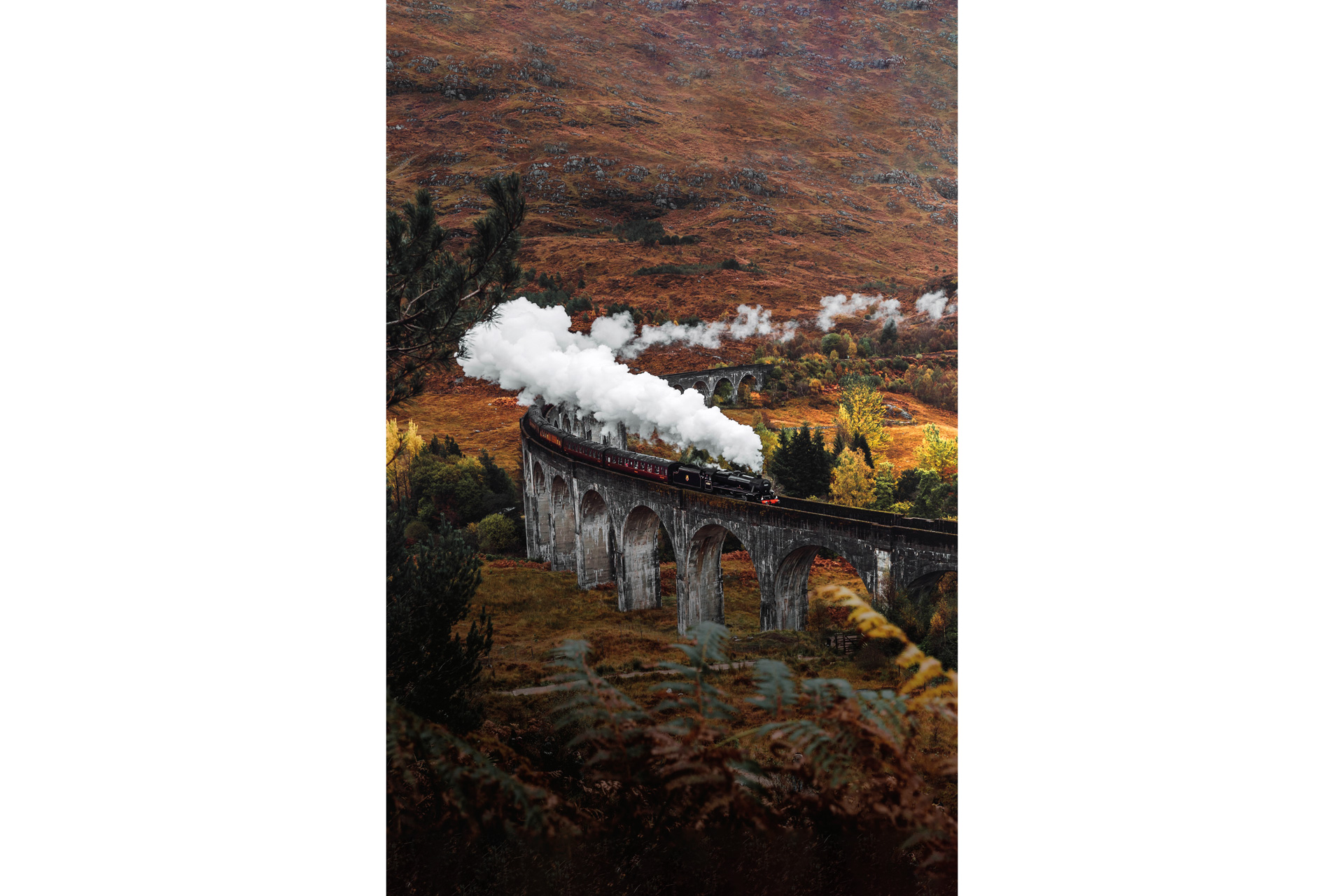The Rail Renaissance: The Slow Travel Trend Is Here To Stay
5 min readTrain travel continues to gather steam, but what’s the driving force behind it? asks Rebecca Cox
The Rail Renaissance: The Slow Travel Trend Is Here To Stay
The hypnotic clickety-clack of wheels on rails; the buffet trolley bumping along between the rows; the filling and emptying of carriages; scenery rushing past; tracks weaving across countries around the globe like lifelines of human existence. (‘The capillarity of the railway system allows travellers to explore almost every corner of the world by train,’ says Gary Franklin, Vice President Trains & Cruises at Belmond.)
After two centuries, despite the unstoppable force of innovation – aeroplanes, helicopters, self-driving cars, electric vehicles – trains not only endure, but our appetite for them is growing faster than ever. Sleeper services are making a comeback, with NightJet launching new routes this year with big plans for the future. Meanwhile, French newcomer Midnight Trains is promising ‘hotels on wheels’, launching from late 2024, revolutionising sleeper services and offering comfortable cabins with routes that include Paris to Milan and Edinburgh to Paris.

So, what’s behind the big train comeback? Firstly, nostalgia. Those clickety-clacks and buffet trolleys packed with shortbreads; school holiday train trips to London to visit a museum. As a child, my birthdays and Christmases were accompanied by an evening family activity of The Great Game of Britain: a board game in which you must travel across the UK by train, ticking off your stops, thwarted by hazard cards, broken train signals and repeatedly being sent to Penzance or Stornoway by your fellow players.
Three decades on, we’re still playing and the game (same tatty board) is now a favourite with my seven-year-old son, too. The appeal of ‘the great train game’ never wanes and nor does the appeal of a great train journey. Stories of notable train journeys are passed down through the generations and via the pages of our favourite literary classics, giving even the most modern trains a retro appeal. One train epitomises this. ‘The historical value of the Venice Simplon-Orient-Express and its role in contemporary culture are simply unmatched,’ Gary Franklin says. ‘People dream of stepping on board our train, an Art Deco masterpiece made of 17 carriages from the 1920s and 1930s.’

Alongside nostalgia there’s the need to slow down. Physically and environmentally, yes, but mentally, too. Where better to seek respite from life’s frenetic pace than within the confines of a plush carriage inside a train chugging steadily toward its destination, immersing you in your surroundings and inviting you to be present for the journey? Six hours on a plane? Miserable! Six hours in a car? Traffic jam city! Six hours on a train? The rare and welcome gift of time.
Speaking of which, we’re somewhat living on borrowed time when it comes to the environmental challenges facing our planet. At present, transport accounts for roughly 25 percent of European emissions. However, simply standing still is not a viable option, not to mention the positive potential impact of ecotourism when it comes to protection and regeneration. So, we must continue to travel, while making better choices about how we do it. Travelling less frequently for longer trips is one easy way to make a positive change and swapping flights for trains can make a huge difference, too (the two go hand in hand, really). On average, train travel emits six times less greenhouse gases than a comparative journey by plane. You could take six return trips from Paris to Milan on the soon-to-launch Midnight Trains route for the carbon cost of one return flight.

The trains themselves are being adapted using new technology to make them better for the environment. Several hydrogen-powered trains are in operation around the world, including Alstom’s Coradia iLint in Quebec, Canada, the first zero-emission train on the North American continent.
And it’s not necessarily about giving up flying altogether overnight (baby steps). Cat Jones, founder and CEO of Byway, says: ‘Flight-free momentum is growing as increasing numbers of people seek to reduce the amount they are flying, rather than eliminate air travel entirely. Just like flexitarianism and meat-free Mondays, people want to make this lifestyle change because they’re worried about the climate crisis. The WTTC (World Travel & Tourism Council) recently reported that 69 percent of travellers are actively seeking sustainable travel options for 2023, and research from McKinsey highlights that 36 percent of travellers are planning to fly less.’

The romance of train travel is undeniable. A few years ago, I had the chance to ride the Orient Express from Paris to Montreux for the jazz festival. The original 1920s carriages, though resplendent with stunning Lalique glass panelling, had no air conditioning and the temperature was above 30 degrees all day. What could have been an uncomfortable, sweaty experience was one of the most fabulous of my life: live jazz musicians winding through the train; free-flowing champagne; mountains rising and falling through the windows; lakes sparkling as we zipped by; and the movement of the fan in my hand melodically matching the rhythm of the trains clacks as I moved from bar car to passenger cabin, clinking glasses with passengers. This year, I zipped along the Italian coastline on a local train on a ticket costing less than €5 (part of a Riviera adventure planned by Inntravel) plunging in and out of tunnels, glimpses of candy-coloured houses perched atop cliffs sloping toward the aqua sea, my son curled up asleep on the seat facing mine: bliss.
Conversely, I write this piece from home in the UK on a day where train strikes have prevented me from coming into town – I’m missing meetings, an event, and a catch-up with a friend. But strikes notwithstanding, I will always give rail travel a second (third, thousandth) chance: train travel is not just a means of getting from A to B, it’s mindful of that all-important time in between. Like an interval between two musical notes. So the only remaining question is – where next?



